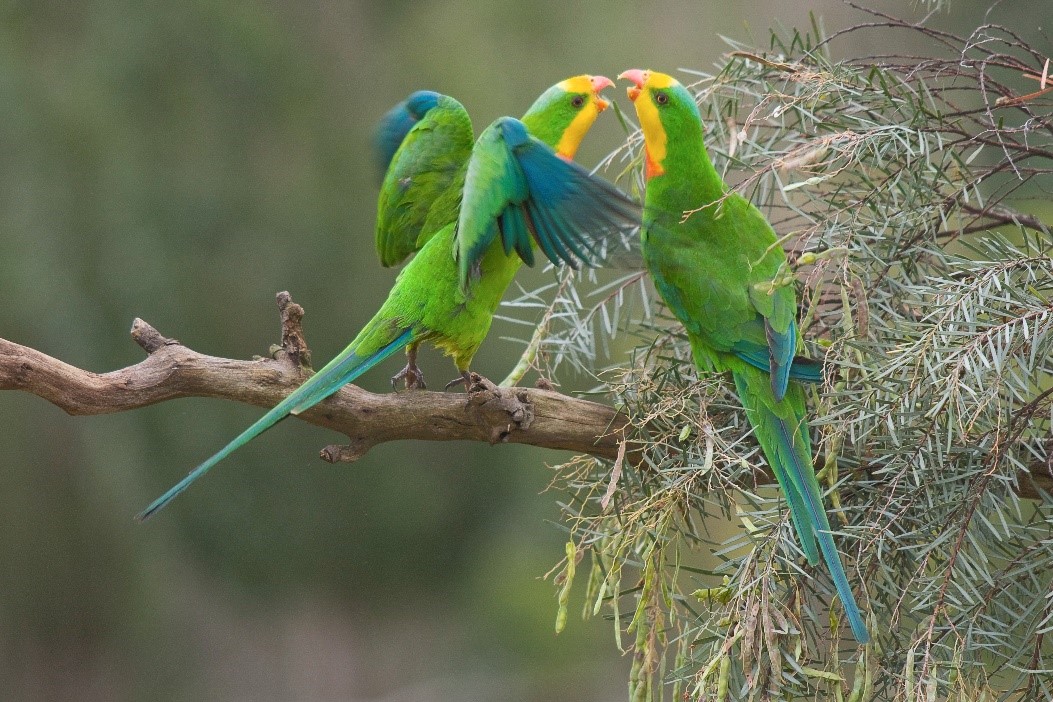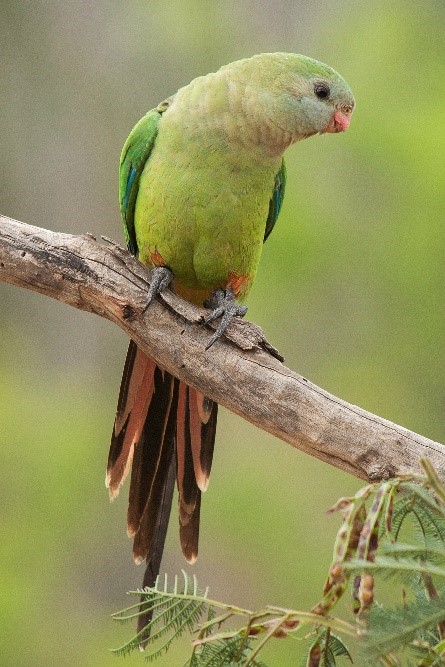Is that a Superb Parrot?
20 Oct 2021
Andy Taylor, Natural Resource Management Advisor, South East Local Land Services
While not trying to boast about having the most threatened species in the local area, Braidwood has welcomed a new threatened visitor from a little further west! The superb parrot is typically restricted in its eastern range by Canberra, but thanks to some observant local landholders, a small flock was recently seen in the Bombay/Farringdon area, just west of Braidwood, which is by far the furthest east that this beautiful threatened green woodland parrot has been recorded. A Farringdon resident sighted them several times, during the course of building their new home, sharing an old woodland area with our more common crimson and eastern rosellas.
This got the attention of threatened species officers within the NSW Department of Planning, Industry and Environment (DPIE), South East Local Land Services and Landcare who have been working together for years in the Yass and Boorowa areas to help landholders protect and enhance important superb parrot breeding habitat. This includes a very successful and popular project called “Saving Our Superb Parrot” which brought together five different Landcare groups to protect and re-plant suitable habitat.
The superb parrot is a medium-sized, about 40 cm long, and bright green with a long, narrow tail, sharply back-angled wings and an aerodynamic body for fast flight. Males have yellow foreheads and throats and a red crescent that separates the throat from the green breast and belly. Females are slightly duller green and have a dull, light blue wash. They do not have the males' red and yellow markings. They are quite distinct from our locally common parrots.
It is the breeding season now and the superb parrot, like many native woodland birds, is searching for that perfect hollow in a living or dead tree, in which to make a nest. Damon Oliver, Senior Team Leader with the South East Ecosystems and Threatened Species Team said that “large old trees, both alive and dead, with hollows are vital breeding habitat for the superb parrot and they are now becoming very rare in our regional landscapes. Without tree hollows, the superb parrot and dozens of other threatened birds, mammals, reptiles and frogs cannot breed and survive.”
As the breeding season winds down through December, most birds traditionally migrate northwards to the western slopes and plains of NSW, so we may not see them for long. So I would like to encourage anyone who has seen them recently or has a photo to verify a sighting to contact me on andy.taylor@lls.nsw.gov.au or 0427 750 891.

Male superb parrots, photo taken by Helen Farrow, DPIE.

Female superb parrot, photo taken by Helen Farrow, DPIE.
To find out more about the superb parrot, visit the DPIE website.